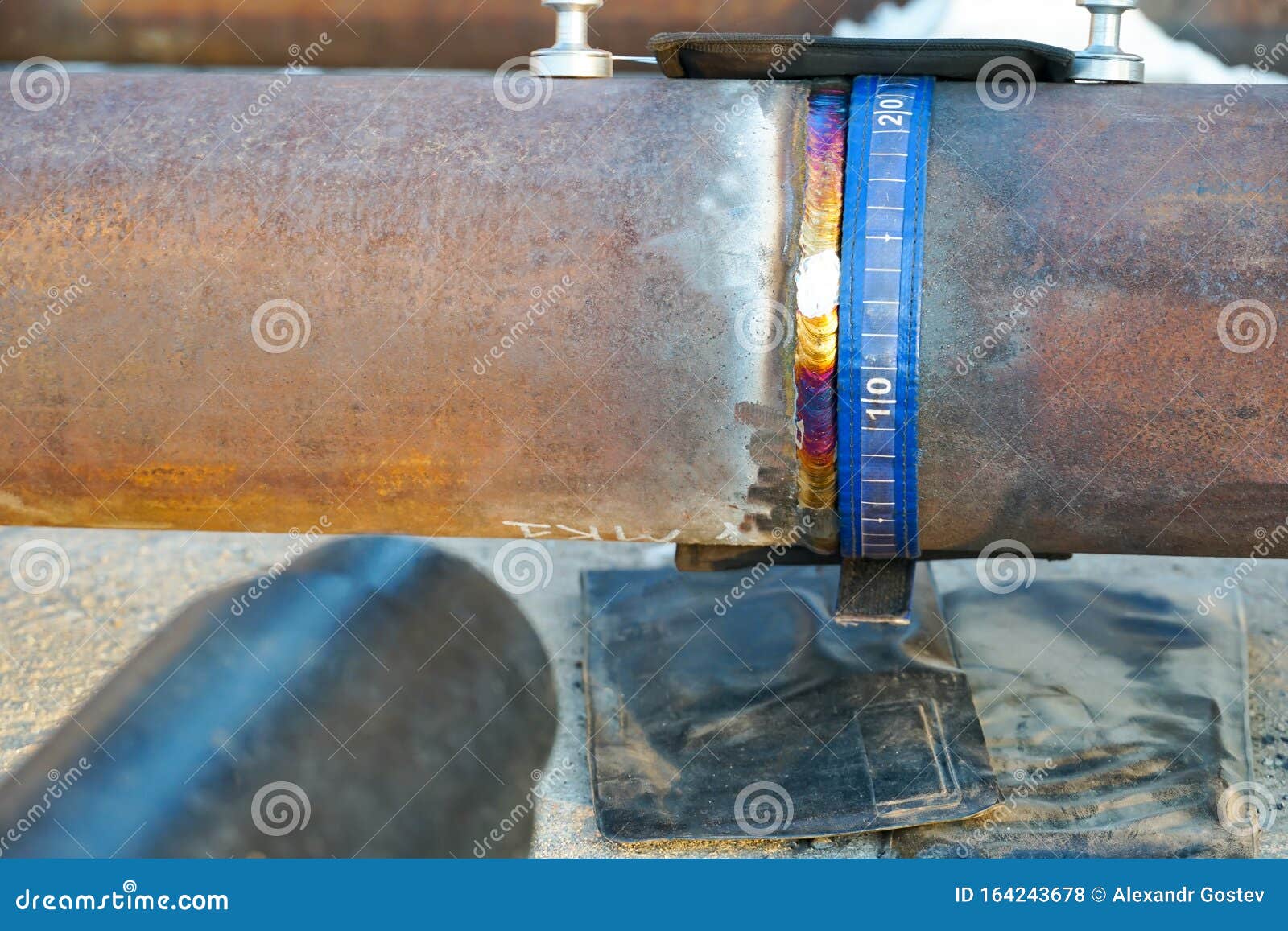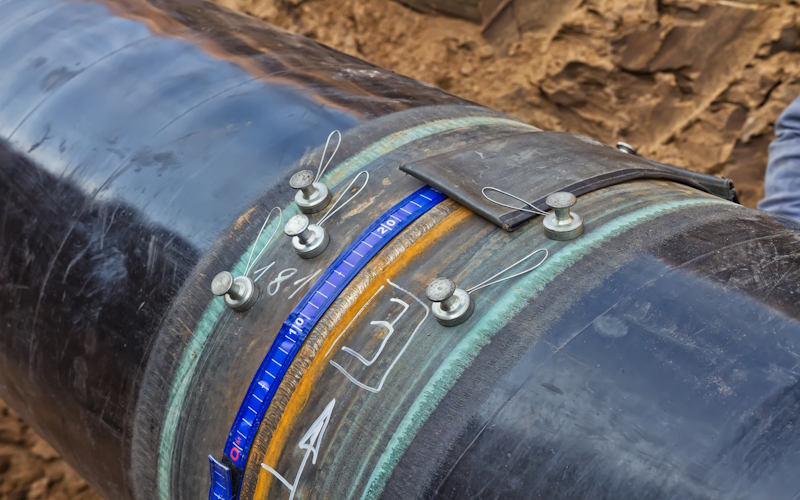Comprehensive Guide to Pipe Welding Assessment: Guaranteeing Integrity and Safety And Security in Pipeline Construction and Maintenance
The integrity and security of pipelines are critical in today's infrastructure landscape, highlighting the critical function of welding examination in pipeline building and maintenance. Pipeline Welding Inspection. The intricacies involved in welding evaluation raise essential inquiries about market criteria and the advancing technologies that might redefine these methods.

Significance of Welding Assessment
Welding examination plays a crucial function in making sure the stability and safety and security of pipeline systems. It works as a basic procedure that verifies the high quality and dependability of bonded joints, which are usually one of the most weak spots in pipe building and construction. Via organized examination, examiners can determine possible flaws such as cracks, porosity, and incomplete blend, which might jeopardize the structural integrity of the pipeline.
The value of welding examination expands beyond plain compliance with market standards; it also safeguards public wellness and the atmosphere. Detailed assessments can improve the longevity of pipe systems, lowering the need for expensive fixings and downtime.
Along with making certain safety and security and conformity, welding examination fosters a society of quality control within organizations. By focusing on inspection throughout the welding process, firms can build an online reputation for reliability and excellence, eventually causing enhanced client self-confidence and organization opportunities (Pipeline Welding Inspection). Hence, the significance of welding assessment can not be overemphasized in the context of pipe building and construction and upkeep
Key Welding Processes
Various welding processes are employed in pipeline building, each with its own advantages and applications. Among the most extensively made use of approaches are Shielded Steel Arc Welding (SMAW), Gas Tungsten Arc Welding (GTAW), and Gas Metal Arc Welding (GMAW) SMAW is favored for its flexibility and ability to execute well in different ecological conditions, making it ideal for field applications.
GTAW, frequently referred to as Tungsten Inert Gas (TIG) welding, is recognized for its ability to produce premium welds with superb control over warmth input, making it excellent for thin-walled pipelines and stainless steel products. GMAW, or Metal Inert Gas (MIG) welding, provides high deposition rates and is efficient for large-scale projects, often employed in the manufacture of pipes in controlled environments.
Additionally, Immersed Arc Welding (SAW) is used for its deep penetration and high productivity, particularly in the construction of large-diameter pipelines. Each of these procedures adds to the general stability and security of pipe building and constructions, enabling welders to choose one of the most ideal method based on product kind, project needs, and ecological problems. Understanding these vital welding procedures is vital for efficient pipeline welding inspection.
Typical Defects and Their Influence

Porosity, defined by little gas pockets caught within the weld, compromises the product and can cause leaks. Cracks, which may occur as a result of thermal stress and anxieties or inappropriate air conditioning, can propagate and result in structural failure under stress. Damaging, where the base metal is eroded along the weld bead, minimizes the efficient cross-section of the pipeline, raising the danger of fracture.
Incomplete blend takes place when the weld metal does not properly bond with the base steel, causing weak areas that might stop working under stress and anxiety. Slag addition, the entrapment of non-metallic product within the weld, can likewise compromise the joint's honesty. Determining and dealing with these problems early in the construction procedure is vital to guaranteeing the lasting reliability and safety and security of pipeline systems, try this site therefore safeguarding both the facilities and the setting.
Examination Strategies and Tools

Visual examination is the initial line of defense, allowing assessors to determine surface irregularities, imbalance, or other noticeable flaws. Ultrasonic testing uses high-frequency acoustic waves to discover internal problems, supplying precise deepness measurements and identifying defects without harming the weld. Radiographic screening uses X-rays or gamma rays to generate pictures of the weld, making it possible for the identification of inner spaces, splits, or additions.
Magnetic fragment testing is especially effective for identifying surface and near-surface discontinuities in ferromagnetic products. This strategy entails applying an electromagnetic field and fine iron bits to the weld, disclosing problems with the accumulation of fragments at flaw sites.
Along with these strategies, specialized tools such as automated ultrasonic screening tools and digital radiography systems improve examination accuracy and effectiveness, making certain a complete evaluation of pipeline welds during building and maintenance.
Ideal Practices for Compliance
Sticking to finest techniques for conformity in pipeline welding assessment is critical for ensuring the stability and security of the facilities. Organizations has to establish an extensive high quality administration system that lines up with market standards such as ASME, API, and AWS. This consists of establishing detailed welding procedures that specify the qualifications, materials, and methods needed for welders.
Normal training and accreditation of examination workers are necessary to keep high proficiency levels. Examiners ought to recognize with various non-destructive screening (NDT) see this techniques, including ultrasonic testing, radiographic testing, and aesthetic assessment, to successfully determine potential problems.
Paperwork plays an essential function in compliance; preserving precise records of inspections, weld treatments, and workers qualifications aids to make certain traceability and responsibility. Scheduled audits and testimonials of welding methods should be conducted to determine locations for enhancement and ensure adherence to developed methods.

Conclusion
In conclusion, the application of rigorous welding examination procedures is extremely important for making sure the integrity and safety and security of pipe construction and upkeep. Continuous renovation in evaluation procedures will add to the longevity and dependability of pipe systems, highlighting the critical function of welding examination in the market.
The honesty and safety and security of pipelines are paramount in today's framework landscape, highlighting the important function of welding inspection in pipe building and upkeep. Recognizing these key welding processes is crucial for efficient pipeline welding evaluation.
Sticking to finest techniques for conformity in pipeline welding assessment is vital for making certain the honesty and safety and security of the framework.In conclusion, the application of rigorous welding assessment methods is paramount for making certain the integrity and safety and security of pipe construction and maintenance. Continual enhancement in inspection processes will certainly add to the long life and reliability of pipeline systems, emphasizing the crucial role of welding evaluation in the market.
Comments on “Advanced Pipeline Welding Inspection: Strategies for Spotting Defects”